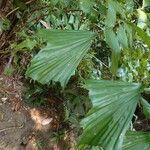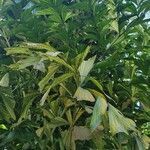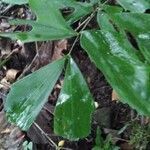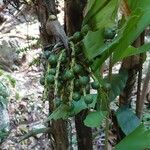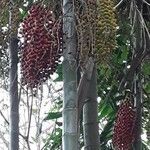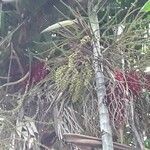Stems clustered, to 10 m tall, 8-20 cm in diam., columnar. Leaves borne along upper half of stem; petioles 80-200 cm; rachis 2-2.8 m; primary pinnae 9-23 per side of rachis; secondary pinnae 10-20 per side of secondary rachis, with jagged margins and elongate apices. Inflorescences borne among or below leaves, to 85 cm; rachillae 20-60, 25-65 cm; male flowers to 10 mm; sepals ca. 3 mm; petals purple to maroon, 12-15 mm; stamens 12-24; female flowers to 5 mm; sepals ca. 3 mm; petals 4-5 mm. Fruits purple-black or reddish, globose, to 2 cm in diam.
Stems clustered, 15 cm or less in diam. Leaves 2--3 m. 2n = 28, 32, 34.
